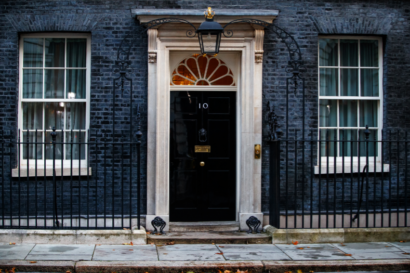AG INSIGHT | 20/03/2018
Unlocking green infrastructure investment

Green infrastructure investment isn’t happening at the speed and scale needed to meet the UK’s policy goals. UK government must intervene now to unlock private-sector investment, via long-term commitment, strategic public spending and issuance of a sovereign green bond, argues Alex White, senior policy officer at the Aldersgate Group.
Green investment is taking off: over US$1tn of private climate finance has been mobilised to date. But it’s only a start. The much-vaunted green bonds market remains less than 1% of the US$9tn global bond market. Money just isn’t going into green infrastructure at the speed or the volume needed to meet the UK’s policy goals, such as the 25 Year Environment Plan (25YEP) and the Clean Growth and Industrial Strategies (CGS & IS).
The challenge
The UK needs to invest a huge amount in green infrastructure, up to £693bn (US$968bn) by 2031, to meet its policy ambitions. Given the tight public purse, the vast majority of this will have to come from the private sector, creating a burgeoning new market for professional services and the low-carbon supply chain but also offering economic and physical resilience in an uncertain future.
The financial system largely favours short-term value and highly liquid investments, filtering capital away from infrastructure as an asset class, let alone newer types of green infrastructure. Amongst the major barriers is a (largely inaccurate) perception that “green” means risky, along with a significant lack of investment pipeline. Time and time again, we have heard from investors that while there is both capital and a willingness to invest, a dearth of investment-grade green infrastructure projects stands in the way.
Driving greater private investment
So how can we mobilise the billions needed for the UK’s green infrastructure and take advantage of the economic opportunities in doing so? After a year of conversations with investors and project developers, the Aldersgate Group has published a new report today, Towards the new normal: increasing investment in the UK’s green infrastructure, and four accompanying briefings on specific solutions to increase investment in domestic energy efficiency, commercial energy efficiency, low-carbon power and natural capital, respectively. The report suggests some key priorities for government to help unlock more investment, including:
1. Commit to green finance in the long term. The government’s Green Finance Taskforce, established in the CGS, is shortly due to publish its final recommendations applying across the financial system. While this is a good start, many of the barriers to greater green investment are deep-seated and structural. It will take significant momentum over a long period of time to create change, so these recommendations should be just the beginning. We suggest that the newly reinstated Clean Growth Inter-Ministerial Group be given an explicit remit to ensure the growth of green finance.
2. Set up funds to target specific market failures. Several types of green infrastructure are not yet sufficiently mature to attract mainstream investment. We recommend that government set up targeted funds in priority infrastructure areas facing clearly articulated market failures. The funds can help to establish proof of concept with cornerstone public investment to attract private-sector investment. Once a market has been established, funds can be sold and proceeds recycled into other green infrastructure areas that need support.
3. Issue a sovereign green bond. The UK has resisted issuing a sovereign green bond to date, in spite of issuances from close competitors, such as France, and from less usual suspects, such as Fiji. A UK green bond to deliver the CGS and/or 25 YEP would help to fill the vast infrastructure funding gap that will likely open up after Brexit, if the European Investment Bank (EIB) invests less in the UK; the EIB was previously the single largest investor in UK infrastructure. Issuance of municipal green bonds could also be an impactful source of funding for vital local green infrastructure, such as natural flood management measures in the context of stretched local budgets.
Radically increasing investment into green infrastructure requires action on several fronts at once—there can be no single solution in such a complex system. Nonetheless, to safeguard our economic and environmental resilience, it’s time for finance to move towards the new normal.



